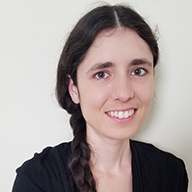Flight Procedure Noise Modeling and Validation for Current and Future Aircraft
UC ITS Statewide Transportation Research Program (STRP)
University of California Institute of Transportation Studies' Resilient and Innovative Mobility Initiative (RIMI)
NSF Smart and Connected Communities Project (NSF S&CC)
ITS Graduate Student Association

University of California, Irvine
As air travel continues to grow and evolve, noise heard by communities remains an important factor in environmental impact assessments. Advanced operational flight procedures where aircraft are flown strategically to reduce noise levels are potential methods to reduce aircraft noise. Examples include: delayed deceleration approaches, where aircraft maintain higher speeds and therefore remain cleanly configured and at lower thrust levels for a longer period of the procedure, climb control on departure, where thrust levels are lowered in specific regions, and super short takeoff and landing procedures. The fleetwide potential for noise abatement via flight procedure design is dependent on aircraft performance capabilities and airspace constraints, which must be factored into the operational design. This presentation will discuss an aircraft performance and noise modeling framework to evaluate and design these advanced operational procedures. In addition, methodologies to validate the performance and noise impact modeling of this framework using ground noise monitoring systems and operational radar data are shown. Finally, ongoing work in noise modeling and validation of future urban air mobility aircraft is also presented.
Jacqueline Huynh is currently an Assistant Professor in the Department of Mechanical and Aerospace Engineering at UC Irvine. She earned her M.S. and Ph.D. degrees in Aerospace Engineering from the Massachusetts Institute of Technology, and her bachelor’s degrees in Aerospace and Mechanical Engineering from the University of California, Irvine. Her research group focuses on aircraft systems design and operations, aviation emissions and noise mitigation, and the integration of emerging technologies in the national airspace.